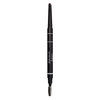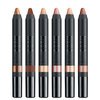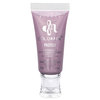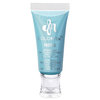Cosmetic Ingredient Awareness: formaldehyde
2

Our customer service team in the US is ready to assist you.
Monday - Friday
7 AM – 4 PM PT
Saturday
7 AM – 4 PM PT


Sisley-Paris Phyto-Sourcils Design 3-in-1 Architect Pencil 5 Taupe
$75

Sisley-Paris Phyto-Sourcils Design 3-in-1 Architect Pencil 6 Espresso
$75

Nudestix Nude Beach 6-Piece Eye Pencil Palette
$69

Danessa Myricks Beauty ColorFix 24-Hour Cream Color Matte Sundaze
$20

Danessa Myricks Beauty ColorFix 24-Hour Cream Color Matte Oasis
$20
Please help us maintain positive conversations here by following our guidelines below.
We reserve the right to remove comments and topics that don't adhere to the following rules. We also may remove the profile of any repeat offender. Thanks for reading and contributing!
Beautylish is a diverse, positive, and respectful community. It’s okay to disagree with someone, but be constructive—not rude. We have a zero-tolerance policy for negativity and harassment.
Take the time to make posts easy to understand by using proper spelling, grammar, and capitalization. Post topics in the appropriate category and refrain from making duplicate posts. Know that we don't allow self-promotion, advertisements, spam, commercial messages, or links to other websites or blogs. And be careful that you don't post someone else's work and present or claim it as your own.
We reserve the right to remove duplicate, miscategorized, and difficult-to-understand posts, or those we deem as advertisements, spam, or plagiarism.
Use the flag button to report inappropriate or disrespectful behavior, or email us at help@beautylish.com.
Mar 10, 2011
Krystal C.
I have been noticing the ingredients of my makeup are full of words I don't know or understand. Since I was so interested by the information I learned about parabens, I decided to look up formaldehyde. I only knew it was used in embalming processes, but had no idea that it was a base ingredient for so many things in our day to day life. Formaldehyde is an organic compound and is mainly harmful when exposed to its purest form. It is, in fact, used in our cosmetics and skincare products, mostly as a disinfectant and preservative against bacteria contamination. From studies performed on cosmetic products, they concluded a small percentage of people had a mild skin reaction, but majority of people had no irritation or negative results. There are cosmetic companies using formaldehyde as an ingredient in their products, but personally, I would check to see where on the list of ingredients it is located. Higher placement on the list indicates the levels of formaldehyde are high, while lower placement on the list indicates the levels of formaldehyde are low - I personally have no reaction to products with formaldehyde in them, but I do make it a point to check the ingredients and making sure the compound is used in lower levels.
Here are some interesting facts I found online:
Formaldehyde is an organic compound with the formula CH2O.
Formaldehyde is a colorless gas with a characteristic pungent odor. It is an important precursor to many other chemical compounds, especially for polymers. In 2005, annual world production of formaldehyde was estimated to be 23 million tons (50 billion pounds). Commercial solutions of formaldehyde in water, commonly called formalin, were formerly used as disinfectants and for preservation of biological specimens.
In view of its widespread use, toxicity and volatility, exposure to formaldehyde is a significant consideration for human health.
Formaldehyde is a naturally occurring substance in the environment made of carbon, hydrogen and oxygen.
Natural processes in the upper atmosphere may contribute up to 90 percent of the total formaldehyde in the environment. Formaldehyde is an intermediate in the oxidation (or combustion) of methane as well as other carbon compounds, e.g. forest fires, in automobile exhaust, and in tobacco smoke. When produced in the atmosphere by the action of sunlight and oxygen on atmospheric methane and other hydrocarbons, it becomes part of smog.
Formaldehyde does not accumulate in the environment, because it is broken down within a few hours by sunlight or by bacteria present in soil or water. Humans metabolize formaldehyde quickly, so it does not accumulate, and is converted to formic acid in the body.
Formaldehyde has been found as a contaminant in several bath products, it is thought to arise from the breakdown of preservatives in the products.
Some topical creams, cosmetics and personal hygiene products also contain derivatives of formaldehyde as the active ingredients that prevent the growth of potentially harmful bacteria.
Formaldehyde preserves or fixes tissue or cells... Formaldehyde-based solutions are also used in embalming to disinfect and temporarily preserve human and animal remains.
For most people, irritation from formaldehyde is temporary and reversible, though formaldehyde can cause allergies and is part of the standard patch test series. People with formaldehyde allergy are advised to avoid formaldehyde releasers as well. People who suffer allergic reactions to formaldehyde tend to display lesions on the skin in the areas that have had direct contact with the substance, such as the neck or thighs (often due to formaldehyde released from permanent press finished clothing) or dermatitis on the face (typically from cosmetics).
Formaldehyde has been banned in cosmetics in both Sweden and Japan.
(courtesy of Wikipedia)
- - -
http://beautybykrystalc.blogspot.com/2011/03/cosmetic-ingredient-awareness.html
Mar 11, 2011
Ana C.
TL;DR version: Are there any notable cosmetic companies with high-formaldehyde products?
Mar 11, 2011
Krystal C.
(in the US) Cosmetic companies are not allowed to have more than a certain amount of formaldehyde - I'm unsure about other countries though.